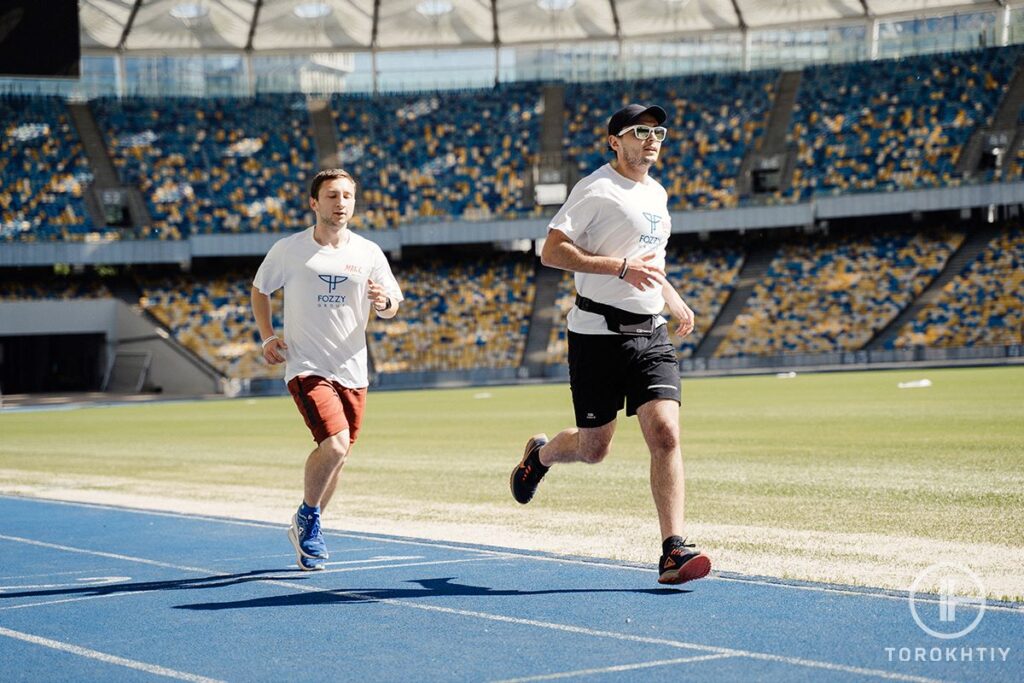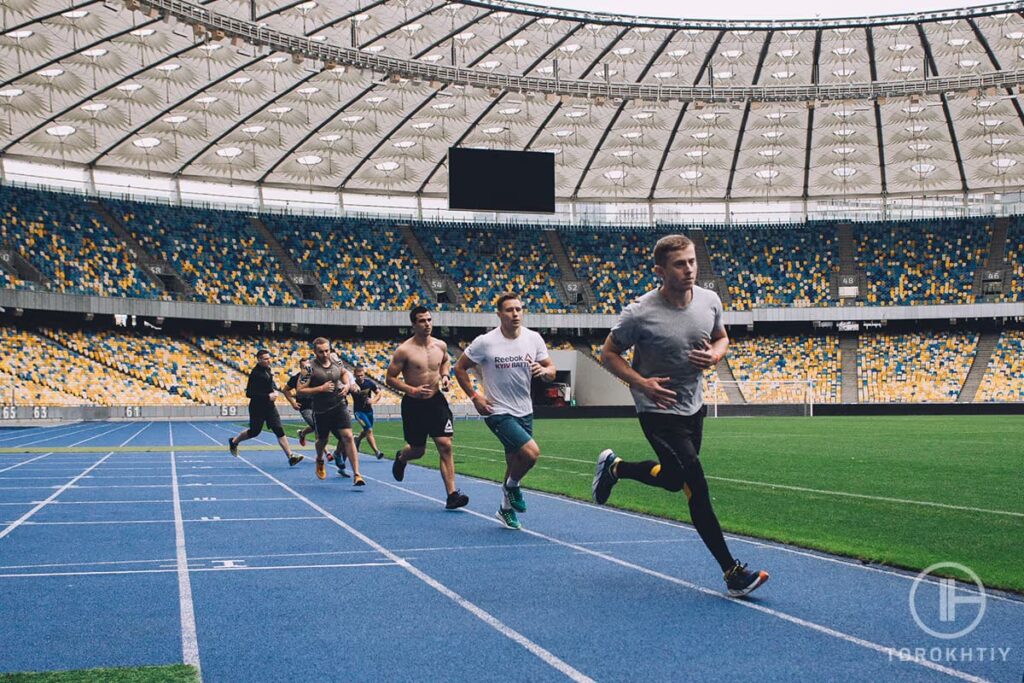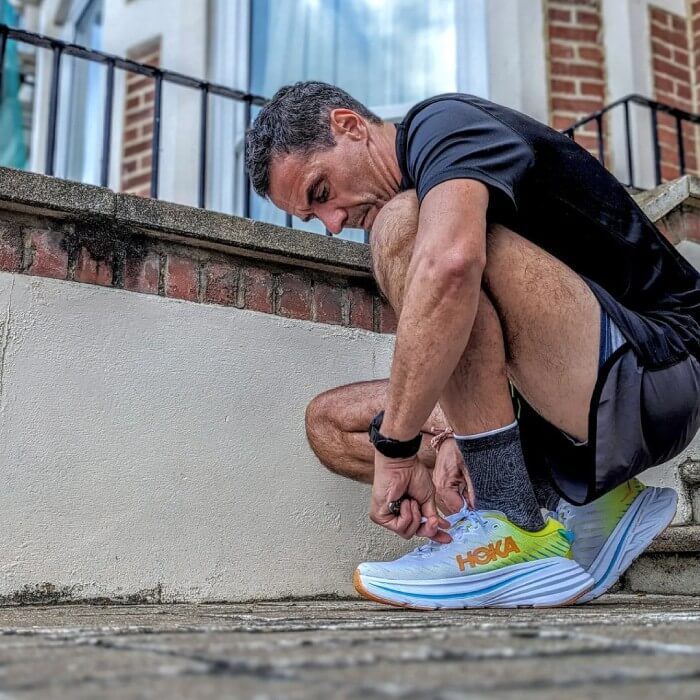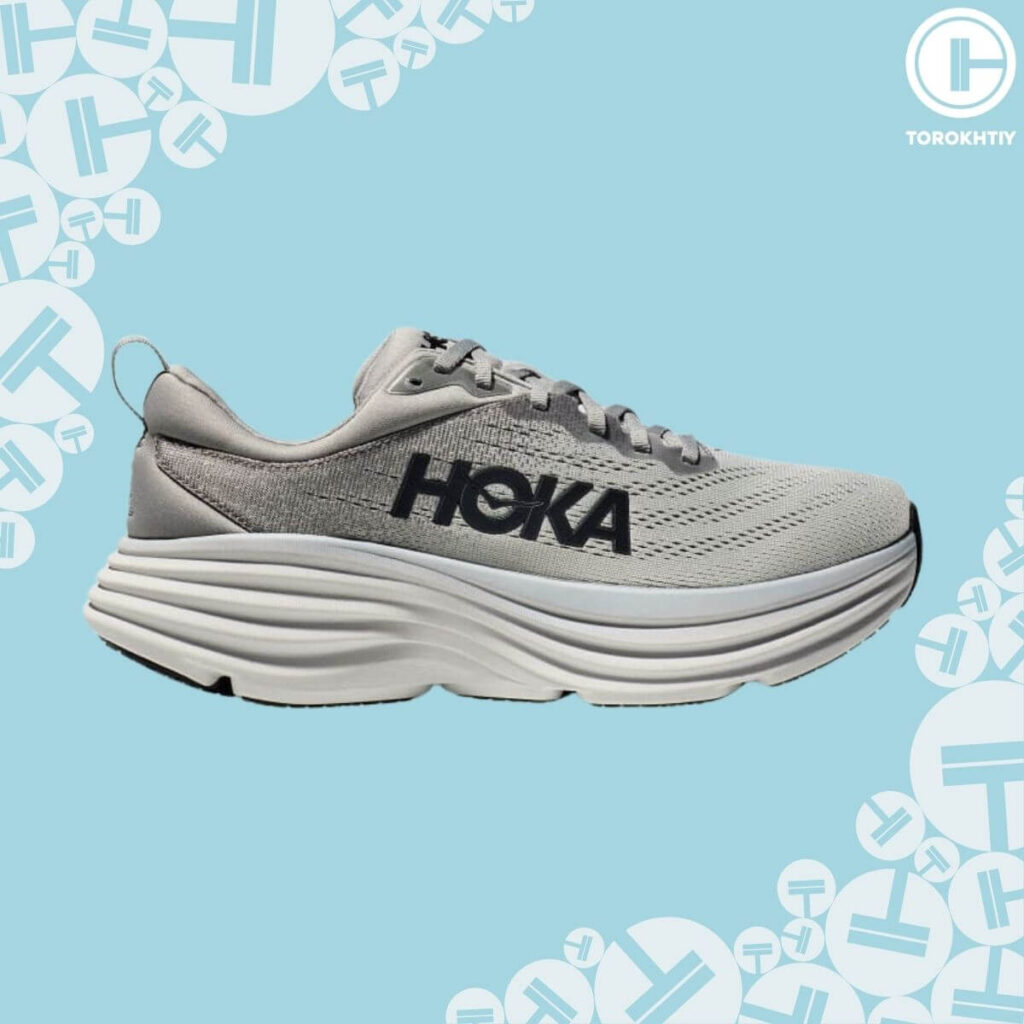How To Run An 8-Minute Mile? Tips and Strategies
Author:
Unlock your full potential by engaging with our experts and community! Have questions about your fitness journey or looking for expert advice on weightlifting techniques? Don’t hesitate — leave a comment below and Oleksandr Zagrebelnyi will provide a personalized answer and insights to help you reach your goals.
Torokhtiy is reader-supported. Some links are affiliate links, and we may earn a commission at no extra cost to you. See our disclosure page for details.
Do you want to increase your running endurance and speed? In that case, you’ve come to the right place. Hitting an 8-minute mile is a fantastic goal to work on whether you are an experienced runner or just getting started. It is not only a difficult task that demands commitment and diligence, but it also has many positive health effects.
So if you’re prepared to lace up your running shoes and hit the road, keep reading for some advice on how to run a mile in under eight minutes!
To run an 8-minute mile, you need to work on your stamina, endurance, and strength. A proper diet along with occasional rests can help your body run faster and avoid serious injuries.

How fast is an 8-minute mile?
People often ask me, how fast do you have to run for an 8-minute mile? For new runners, an eight-minute mile is an unusual target. Running an eight-minute mile is not simple, but it is a goal that can be attained with proper training.
To achieve this feat, you must be able to maintain a pace of 7.5 miles per hour for the entire mile. This entails running 400 meters in approximately two minutes or one loop around a conventional track.

Is an 8-minute mile good result?
Yes, most people consider an 8-minute mile to be an excellent performance. You’ll be able to increase your cardiovascular fitness because of the quick pace.
A mile will take you between 12 and 15 minutes to complete if you are new to jogging since you will need that time to develop your stamina and endurance.
A reasonably fit, non-competitive runner completes a mile in 9 to 10 minutes on average. Elite athletes should be able to complete a mile in 4 to 5 minutes.

The 8-Minute Mile Standard
Running enthusiasts frequently set themselves the fitness goal of running an 8-minute mile. For both beginner and experienced runners, reaching this objective is frequently considered a sign of development. Let’s look at the pace at which you should run to complete an 8-minute mile mph in contrast with the 5k, 10k, half marathon, and marathon race times.
Distance-based equivalent race paces
| Distance | Time | Pace per km | Pace per mile |
|---|---|---|---|
| 1 mile | 08:00 | 4:58 | 08:00 |
| 2 miles | 16:48 | 5:13 | 8:24 |
| 5k (3.1 miles) | 26:36 | 5:19 | 8:34 |
| 4 miles | 34:47 | 5:24 | 8:42 |
| 5 miles | 44:03 | 5:28 | 8:49 |
| 10k (6.2 miles) | 55:28 | 5:33 | 8:56 |
| Half Marathon (13.1 miles) | 2:02:23 | 5:48 | 9:20 |
| Marathon (26.2 miles) | 4:15:10 | 6:03 | 9:44 |
Looking at the table people often ask “is an 8-minute mile good” as many races feel hard to complete in 8 minutes. Completing a mile in 8 minutes is the first step in increasing your stamina and confidence for longer races.
Let’s now see how to run an 8-minute mile pace while keeping these few things to keep in mind.
Start by concentrating on your running form and technique. Running with proper form will increase your efficiency and help you stay injury-free.
Second, remember to properly warm up before and cool down after your runs. Your body will recuperate from your run and get ready for the next one with the aid of a proper warm-up and cool-down.
Last but not least, pay attention to your body. Take a rest day or reduce your weekly distance if you’re feeling worn out or sore.
How to Increase Your Running Speed Consistently?
While there are numerous techniques to boost your running speed, consistency in your training is key. Here is a weekly plan to help you run more quickly and consistently:

Strategies to Achieve an 8-Minute Mile: A Week-by-Week Plan for Faster and Efficient Running
To start running more effectively and decrease your running time, you need a precise plan. Here is a guaranteed weekly plan that you should follow a month to help you speed up your runs while maintaining a balanced and healthy body.
1. Monday
When the overall volume of training is appropriate, even one day of intense weightlifting can increase strength and functional muscle. Running enthusiasts may strengthen their legs, upper body, and core with a full-body workout—all components that are crucial to being a successful runner.
Sample strength training regime:
- Abdominal crunches: 3 sets, to failure;
- Lat pulls: 3 sets, 10-12 reps;
- Seated cable rows: 3 sets, 10-12 reps;
- Dumbbell lateral raises: 3 sets, 12-15 reps;
- Barbell military presses: 2 sets, 10-12 reps;
- Dumbbell chest presses: 3 sets, 8-10 reps;
- Barbell bicep curls: 3 sets, 10-12 reps;
- Tricep cable press downs: 3 sets, 10-12 reps;
- Leg press machine: 3 sets, 8-10 reps;
- Seated hamstring curls: 3 sets, 10-12 reps;
- Seated calf presses: 3 sets, 8-10 reps.
2. Tuesday
Run 400 meters for four to six sessions, giving yourself a two-minute break in between. Employ a submaximal stride, which means you don’t operate at full capacity but rather slightly below the anaerobic threshold. Each run should be challenging, but not utterly exhausting.
3. Wednesday
Active recovery is needed between a full day of rest and intense training. It can be a 30-minute walk at a comfortable pace, a leisure jog, or other light cardio exercises. Spend time stretching out to improve your flexibility.
4. Thursday
A tempo run is a long run that is completed at a pace that you can maintain the entire time. Start by going two or three miles at a steady pace. Work towards a faster tempo as you get better at running, and eventually up the distance to five miles.
Many runners may need to accelerate to 180 steps per minute, or three steps per second, to maintain an 8-minute mile pace. Think of that as the ultimate goal.

5. Friday
It is preferable to use today for recovery since the tempo run may prove somewhat strenuous.
6. Saturday
To increase your total endurance and test your physical and mental boundaries, this should be your longest run of the week. Maintain your speed in the middle of the “tempo” and “active recovery” ranges. Start with three miles, then increase the distance each week until you reach 10 miles.
7. Sunday
You have fought your battle for six days straight. So now no lifting, running, or exercising. Spend the day relaxing, fueling up for the next week with healthy foods.
2 Common Running Mistakes to Avoid
As everyone can start doing it at any moment, running might appear simple. Yet, to increase your time and become a great runner, you must adhere to a set regimen. The following are the most prevalent difficulties to avoid.
❌ Running Excessively
Although you might think that running more will help you in achieving your goal faster, it does not work so, as it can have adverse effects on your health. Especially when considering running an 8-minute mile pace. Excessive running can cause fibrosis or scarring in the heart tissue, which can lead to atrial fibrillation or irregular heartbeat.
On the other hand, it has to be followed by a detailed workout plan that highlights the necessary amount of running to progress in a healthy way.
❌ Ignoring Recovery
Resting might seem confusing if you want to achieve this tempo & speed in your daily runs. However, it is necessary to let your muscles and mind relax from working out too much. This rest period helps to increase your muscle strength and reduce mental stress.
5 Training Workout Tips to Help You Run an 8-Minute Mile
For the 8-minute mile pace, you need to be able to sustain a pace of approximately 7.5 miles per hour. This means that your training workouts should focus on building up your endurance and speed so that you can sustain a fast pace for an extended period.
1. Stretching
Stretching is the basics of any workout routine and should be part of your injury prevention approach.
Running enthusiasts are used to their legs feeling tight and aching after a run.
That is why, stretching lessens the likelihood of injury by preventing tight and stiff muscles.
Make sure to include stretching in your training plan, both as a regular moderate stretching practice and as part of the cool-down after a run.
Basic stretch poses:
- Hip flexor stretch;
- Standing quadriceps stretch;
- Standing hamstring stretch;
- Downward dog and walk out your calves.
2. Aerobic and anaerobic fitness
Aerobic and anaerobic fitness is considered to be extremely useful in training for an 8-minute mile. Aerobic fitness refers to the ability to sustain moderate-intensity activity for extended periods, whereas anaerobic fitness refers to the ability to endure high-intensity activity for brief periods.
3. Interval training
It is a type of workout that can help you build up the necessary endurance and speed. Intervals involve alternating periods of high-intensity effort with periods of active or passive recovery. For example, you might sprint for 30 seconds and then jog or walk for 1 minute as your active recovery.
4. Food & Hydration
Eating the right food and hydrating after your runs is crucial because your muscles need the necessary nutrients to develop and mend. These foods should be high in carbohydrates to restore your energy, and proteins to help your muscles grow stronger. If you don’t replenish this lost water and salt, dehydration could cause cramping and headaches.

5. Hill Training
Finally, hill running is another excellent strategy to prepare for an 8-minute mile. Hill running is proven to increase cardiovascular fitness and endurance. Run up a high hill, then coast back down. This sequence should be repeated multiple times.
Hoka Bondi 8
- Material: Breathable and supportive mesh upper
- Sole Material: Full-length EVA midsole for maximum cushioning
- Outsole (tread feature): Durable rubber outsole with a unique lug pattern
- Drop: 4mm
- Season: Suitable for all seasons
- Special Features: Exceptional cushioning and comfort
- Size: Available in various sizes
- Type: Maximum cushioning running shoe
If you want excellent running or walking shoes or just footwear you’ll be comfortable in, you can’t go wrong with the Hoka Bondi 8.
It’s been upgraded and now they have lighter, softer materials and a new extended heel design. The heel design gives a super soft, balanced feeling from th emoment your heel hits the ground to when you push off with your toes.
As far as the weight goes, it’s around 10.80 ounces, and the heel drop is 4 mm. They’re not too heavy and the lower drop is a good balance between cushioning and feeling connected to the ground.
The Bondi 8 is focused on cushioning and keeps things simple. There’s a good amount of support without any extra stuff that you don’t really need and that would only jack up the price. Take the rear crash pad, for example – it makes for a soft, smooth ride, which is perfect if you like to run outdoors.

The upper part is made of engineered mesh, which is breathable and keeps your feet cool and dry. The tongue and collar have memory foam and mold to your foot shape. All of these features make the fit snug but flexible, which is exactly what you would want.
The Bondi 8 is eco-friendly because it uses recyclable materials in parts like the mesh and the sockliner. Plus, the shoes are completely vegan, which (if that’s important to you) is nice!
Frequently Asked Questions About Running an 8-Minute Mile
How many mph is an 8-minute mile?
The 8-minute mile mph equals to 7.5 miles per hour, or 12 kilometers per hour, of running.
Is it hard to run an 8-minute mile?
Definitely! Many runners regard an 8-minute mile as a difficult but attainable objective. Although, more seasoned athletes might feel like a breeze walk in the park.
In Conclusion: The 8-Minute Mile is Achievable with Training and Determination
Running a mile in eight minutes might seem like an impossible task but it is not. With the proper training and consistency, you can achieve an 8-minute mile. So when are you starting to train for it? Comment below and let’s discuss it together.
References:
- Running Track Dimensions and Layout Guide // : https://sportsvenuecalculator.com/knowledge/running-track/running-track-dimensions-and-layout-guide/
- Elite athletes // Loughborough University: https://www.lboro.ac.uk/departments/foundation/elite-athletes/
- Weekly Training Frequency Effects on Strength Gain: A Meta-Analysis // Sports Medicine: https://sportsmedicine-open.springeropen.com/articles/10.1186/s40798-018-0149-9
- What You Need to Know About Active Recovery Exercise // Healthline: https://www.healthline.com/health/active-recovery
- How to Get in That Tempo Run // Healthline: https://www.healthline.com/health/tempo-run
- Slide show: A guide to basic stretches // Mayo Clinic: https://www.mayoclinic.org/healthy-lifestyle/fitness/multimedia/stretching/sls-20076840
- Hill Training Guide // ASICS: https://www.asics.com/gb/en-gb/running-advice/hill-training-guide/
- Photos by Torokhtiy Media Team.
Why Trust Us?
With over 20 years in Olympic weightlifting, strength training, nutrition coaching, and general fitness our team does its best to provide the audience with ultimate support and meet the needs and requirements of advanced athletes and professional lifters, as well as people who strive to open new opportunities and develop their physical capabilities with us.
By trusting the recommendations of our certified experts in coaching, nutrition, and sports training programming, as well as scientific consultants, and physiotherapists, we provide you with thorough, well-considered, and scientifically proven content. All the information given in the articles concerning workout programming, separate exercises, and athletic performance, in general, is based on verified data.
The product testing process is described in more detail here.
Oleksandr is a running coach and member of the Nike Run Club coaching team for 8 years. A participant in national and international competitions at distances from one kilometer to the ultra trail. Owner of mountain trail running camps. Nowadays Oleksandr is responsible for creating running training programs for athletes of various levels, coaching personally offline and online, conducts trail running camps in the mountains, participates in competitions.




Still have questions after reading our article? Unlock your full potential by engaging with our experts and community! Don’t hesitate — leave a comment below and Oleksandr Zagrebelnyi will provide a personalized answer and insights to help you reach your goals.